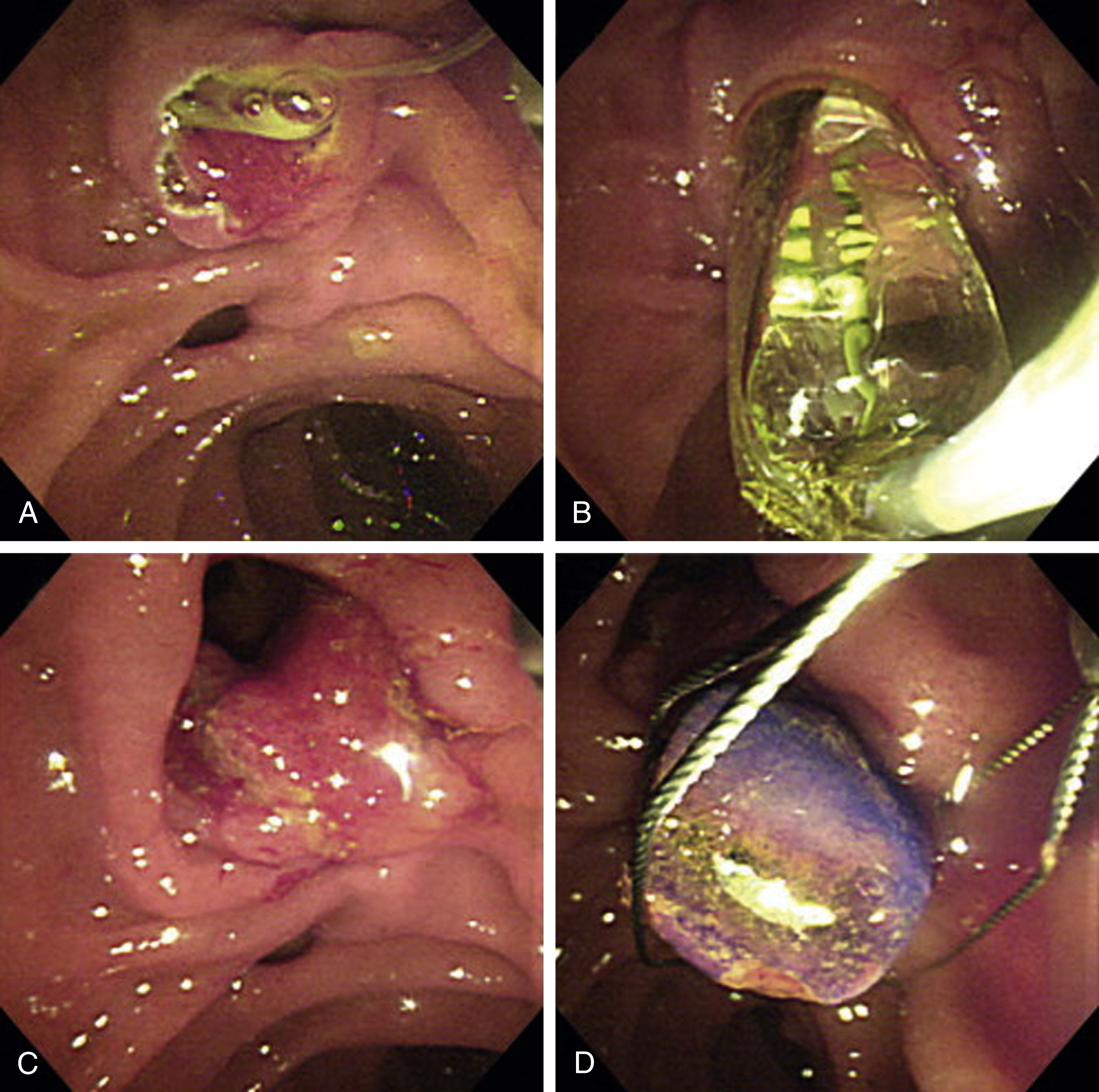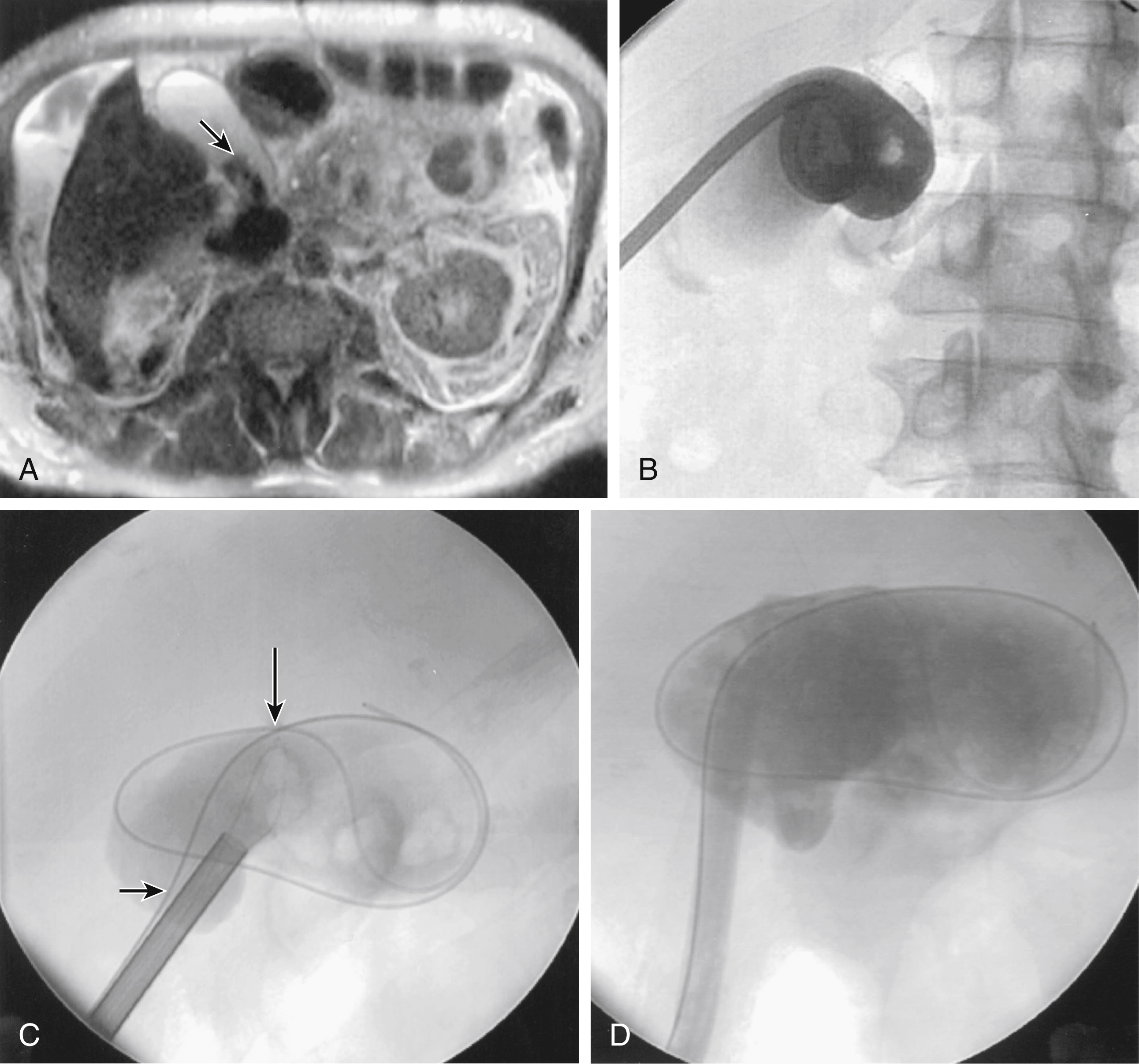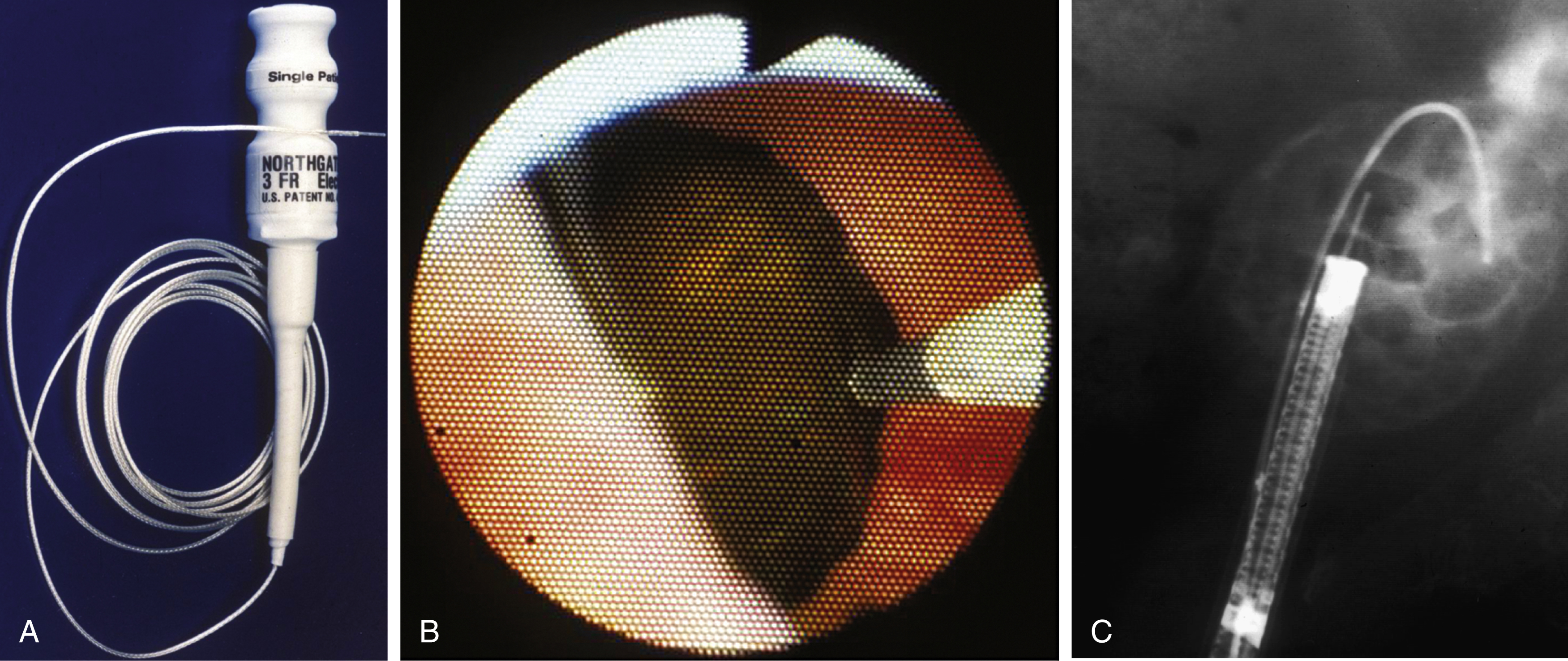Physical Address
304 North Cardinal St.
Dorchester Center, MA 02124
The authors wish to acknowledge authors Daniel B. Brown and Daniel D. Picus for their contribution to this chapter in the second edition of this textbook.
Gallstones affect more than 10% to 15% of the US population. Approximately 250,000 people have symptomatic gallstones that require specialized intervention every year. Gallstones are the most common cause of acute cholecystitis. Surgical interventions for symptomatic gallstones consist of laparoscopic or open cholecystectomy. Although the laparoscopic surgical approaches are now used more frequently, some patients, because of major comorbidities or anatomic factors, are not deemed appropriate surgical candidates.
The nonsurgical group of patients can greatly benefit from percutaneous drainage and staged stone extraction. Patients with symptomatic gallstones often simultaneously have calculi in the intrahepatic or extrahepatic bile ducts. Endoscopic retrograde cholangiopancreatography (ERCP) is the principle technique to clear these stones in most patients. However, in patients with challenging anatomy (duodenal diverticulum, impacted stones >15 mm), endoscopic techniques are more prone to failure. Finally, patients who have undergone previous biliary reconstruction as part of a Billroth II or Roux-en-Y anastomosis may have calculi that are inaccessible by endoscopy. Biliary calculi in these patients may require percutaneous removal.
The primary indication for gallstone extraction is symptomatic gallstones in patients who are not surgical candidates. Patients who have failed ERCP or percutaneous transhepatic cholangiography or both comprise most of the patients with retained biliary duct stones who are referred for treatment. Some surgeons will refer patients who still have surgical T-tubes in place for interventional radiologic management if hepatolithiasis is diagnosed soon after their surgery. Intraductal calculi, which are peripheral to the hilum of the liver, are extremely hard to reach for all endoscopists, so percutaneous management plays a significant role for management.
Absolute contraindications include uncorrectable coagulopathy and anatomic barrier to percutaneous access of the gallbladder (e.g., morbid obesity, interposed bowel). Patients who have anaphylactic response to iodinated contrast also present a significant contraindication. The interventions can, however, be performed without contrast or with a noniodinated substitute such as gadolinium. Relative contraindications include nondistended gallbladders and contraindication to sedation or anesthesia (such as poor cardiopulmonary reserve).
Much of the equipment used for percutaneous stone extraction is familiar to trained interventional radiologists. Procedures are staged so initially patients will undergo drainage of the gallbladder with either a locking loop retention catheter or placement of an external or (preferably) internal-external biliary drainage catheter. Details of these initial drainage procedures and required equipment are described elsewhere in this textbook.
Visualization of the gallbladder and biliary ducts is performed with injections of ionic contrast material unless the patient has a significant contrast allergy, in which case the patient is premedicated with corticosteroids, and nonionic contrast material is used. To perform stone removal, we use a 15F flexible choledochoscope (model CHF-4B [Olympus, New Hyde Park, NY]) ( Fig. 96.1A ). The scope contains a working channel that allows use of standard instruments measuring up to 5F in diameter, including graspers and baskets. The existing tube tract is dilated to 18F with a series of Teflon dilators (Cook Medical, Bloomington, IN) ( Fig. 96.1B ). Once the tract matures (generally several weeks), the outer Teflon sheath allows easy passage of the choledochoscope into the biliary tree, providing a large-bore access to flush out stone debris during the procedure. The scope is connected to intermittent normal saline irrigation during use. A principal advantage of the choledochoscope is that it allows the operator to characterize filling defects identified at cholangiography such as stones, aggregates of mucus, air bubbles, clots, or soft tissue masses ( Fig. 96.1C ).

For stones that are too large to dislodge and fragment with baskets or other tools, we perform intracorporeal electrohydraulic lithotripsy (EHL). Under direct vision, a spark from the electrode generates a shock wave in the fluid medium of the gallbladder or bile duct, which then fragments the stone. We use a foot pedal–controlled EHL shock wave generator (EL-115 [American ACMI, Stamford, CT]) with a 70- to 80-watt power output. The EHL electrode (Northgate, Chicago, IL) is 3F and passes through the working channel to allow direct visualization during activation. Others have described use of an 11F choledochoscope (URF type P2 [Olympus]). Potential advantages of the smaller device are that it requires a smaller percutaneous access (14F) to use and may pass more easily beyond structures within the intrahepatic biliary ducts. The working channel of this scope is 3F. In one series, the author using this technique describes use of a coumarin green pulsed dye laser (MDL-1 LaserTripter [Candela Laser, Wayland, MA]) to fracture resistant stones. The laser operates at a wavelength of 504 nm, and power output is between 40 and 100 mJ. A downside of this device is a smaller working channel to pass baskets and other tools. Additionally, the laser-based equipment is more costly than EHL. Use of the ultrasound lithotripters has been described, but the access required for application is large (24F) and has a small field of view.
The SpyGlass Visualization System (Boston Scientific, Marlborough, MA) has also been used with both EHL and holmium laser technology to manage large biliary stones, especially those that are more difficult to remove. The SpyGlass system, when used in collaboration with other lithotripsy devices allows the operator to fragment biliary stones with direct visualization of the target area. This allows for a greater efficiency and success rate in stone clearance with single session interventions. It has been shown in multiple cases that the SpyGlass-guided lithotripsy technology has been helpful in the treatment of challenging bile duct stones. In general patients treated with this technique have a shorter recovery time and fewer secondary treatment visits. In a 2012 case study analysis it was reported that the use of the SpyGlass combination was highly effective in the permanent removal of common bile duct stones. The authors of this publication describe its application in two patients with Mirizzi’s syndrome, an infrequent complication of cholelithiasis.
This procedure has four components: (1) percutaneous cholecystostomy, (2) tract dilation, (3) stone removal, and (4) access tube removal. Patients are sedated and given intravenous antibiotics (e.g., 3.375g piperacillin/tazobactam or 3g ampicillin/sulbactam) before the procedure. Some operators prefer administration of atropine (0.6–1 mg) to limit the potential of vagal response secondary to gallbladder dilation. Initial access may be either transhepatic or transperitoneal, although the latter approach is more commonly associated with acute pain during catheter placement and generally requires a longer period of tract maturation (i.e., not unlike the maturation time required for interventions through a surgically placed T-tube tract).
The gallbladder may be targeted with any combination of fluoroscopic, computed tomographic, or ultrasonic guidance. Optimally the route of entry will be at the end of the gallbladder fundus to simplify reaching calculi with the EHL probe and to ease clearance of the entire lumen of calculi with baskets. Using the Seldinger technique, a 10F to 14F retention loop catheter is placed ( Fig. 96.2 ). In patients with chronic cholecystitis, tract dilation and stone extraction may be performed the next day. Patients who have drains placed for acute cholecystitis should recover from their presenting symptoms before stone removal. A safety wire is left in the gallbladder lumen outside the 18F working access. In cases where tract dilation is difficult, removable T- fasteners are available. 7 Stones too large to remove via the sheath and resistant to basket fragmentation can be broken up with the EHL probe. Important factors to consider when using EHL are that the probe has to be 1 to 2 mm beyond the tip of the scope to avoid damaging the choledochoscope ( Fig. 96.3 ). The probe has to be in direct contact with the stone and not the gallbladder wall. Activation of the EHL probe while in contact with the biliary endothelium can lead to bleeding or bile leakage that will make visualization difficult for the remainder of the case. When the operator believes all stones have been removed, final choledochoscopy is performed to ensure no residual stones remain. Contrast cholangiography is performed to evaluate the cystic and biliary ducts. Calculi are identified in cystic and biliary ducts 28% and 24% of the time, respectivel. Stones in these structures are removed via the gallbladder access if possible or by ERCP if necessary. Calculi in the cystic duct are often impossible to ensnare in a basket or treat with EHL. We have found that leaving an internal-external biliary drain through the gallbladder and cystic duct into the common bile duct and duodenum will usually passively fragment the stones and allow them to pass into the duodenum or out the cholecystostomy catheter. At the end of the procedure, a retention loop catheter is again left in the gallbladder (14F–16F). A large-bore catheter is left in place to tamponade the tract used for endoscopy and allow drainage of any residual “gravel” from calculus fragmentation. The catheter is left to gravity drainage.


Become a Clinical Tree membership for Full access and enjoy Unlimited articles
If you are a member. Log in here